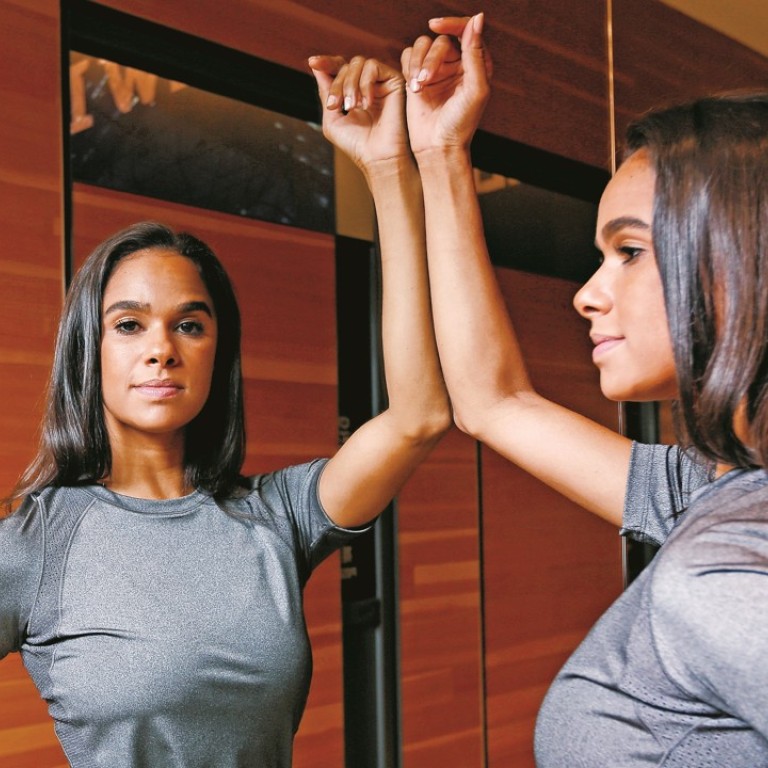
Pioneering black ballet dancer wants to keep destroying stereotypes and changing attitudes
In her first visit to Hong Kong, Misty Copeland talks about how she became the first black performer to be made principal dancer at the American Ballet Theatre – and how in another life she could have been a chef
US ballet star Misty Copeland looks up at a giant image of herself, the advert framing her muscular body as she balances on one leg, the other stretched skywards. “I haven’t seen all the images for this campaign,” she says about her collaboration with US sports apparel brand, Under Armour. “I like it.”
You would know if she didn’t. Copeland, who in 2015 became the first black woman promoted to principal dancer of the American Ballet Theatre in the company’s 75-year history, is known not just for shattering stereotypes, but also for speaking her mind.
Misty Copeland’s appointment as American Ballet Theatre principal a boost for diversity
“I once did a photo shoot for a magazine and they altered my body so I spoke up, said I didn’t want to look that way. I told them that I’m very happy with how I look and that I worked hard to look this way, so how dare you change me.”
It’s 4pm and Copeland has arrived at a packed APM mall in Kwun Tong, Saturday shoppers going about their business oblivious that there is a dancing dynamo in their midst. It’s her first visit to the city – other trips with the ballet were cancelled due to injuries – and she is making sure she satisfies her love for shopping and food.
“I’ve been here four days and the weather’s great. It’s snowing at home in New York, so I’m loving this. There are so many people and so many malls,” she says as she plonks herself down on a beautiful but totally inappropriate swivel stool in Under Armour’s fourth-floor outlet.
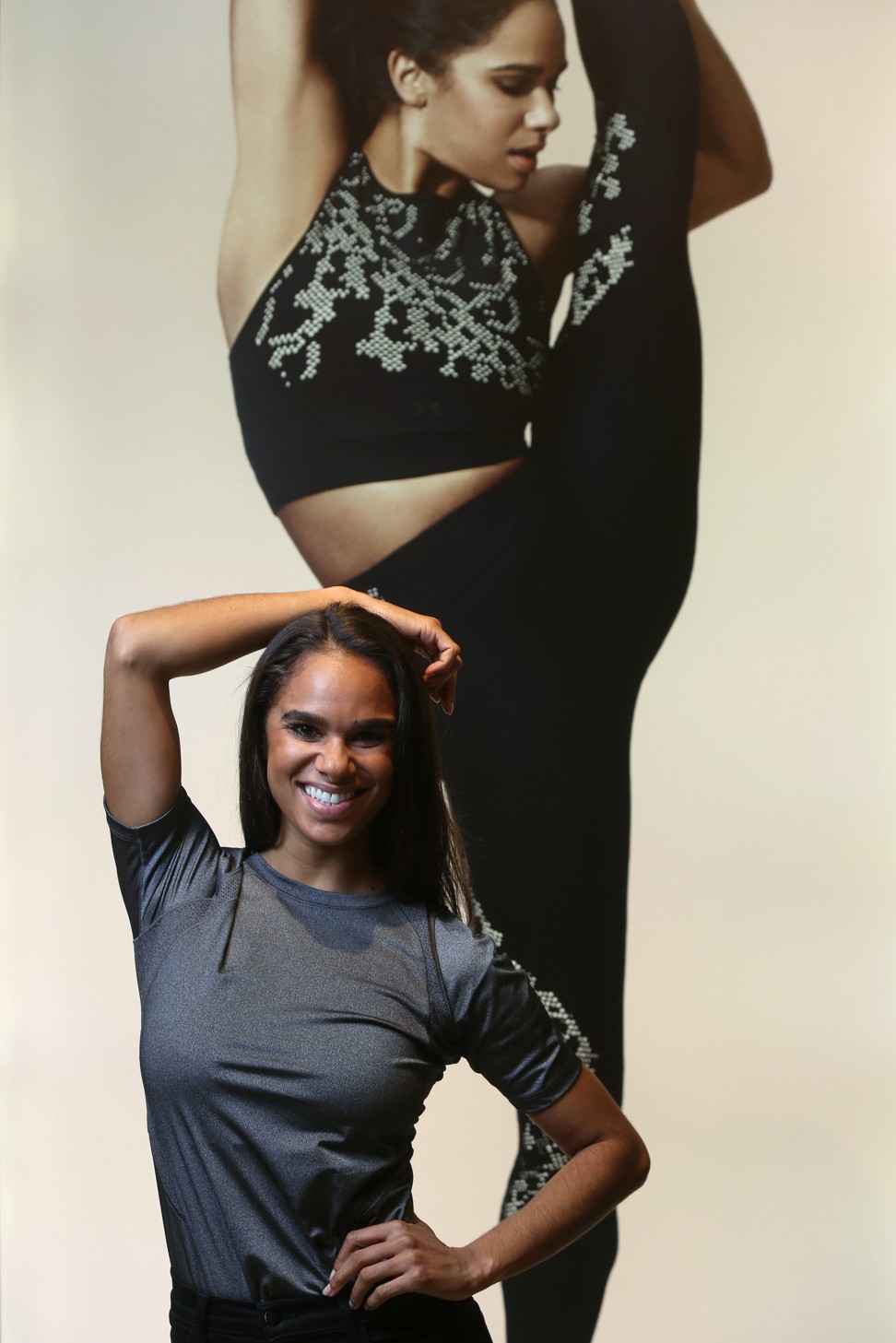
The previous night she performed in the American Ballet Theatre’s production of Whipped Cream, a dark fable about a boy who overeats at a sweet shop. Choreographed by Alexei Ratmansky with rich layers added by set and costume designer Mark Ryden, the production was a highlight of the Hong Kong Arts Festival.
“When you travel and perform around the world, it’s interesting to see how different audiences react. In America the audience responds immediately to what they see and like, but in this region audiences are far more reserved. Japan is the most reserved, but once a performance is over they know it’s the end and a polite time to applaud.”
Looking back at the advert Copeland makes her body-bending moves look so effortless. Easy almost. That is one misconception she is keen to dispel.
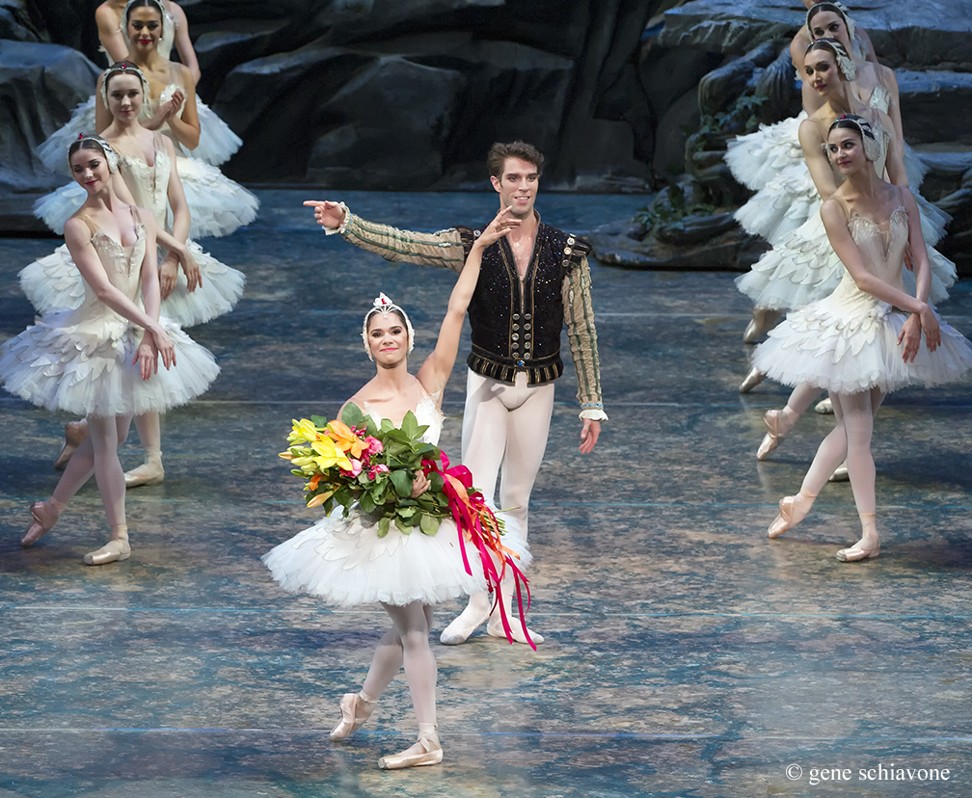
“Most people assume ballet doesn’t take that much power or athleticism, that it’s easy, that we are not athletes. Therefore people assume we starve ourselves and go on stage and twirl around. What people don’t realise is, when training and dancing up to eight hours a day and performing in the evening, there’s no way that we could actually function as athletes if we weren’t feeding and fuelling our bodies. Also, that a ballerina can’t have brown skin. I think that is another big misconception.”
In 2014, Under Amour broke new ground with its female-focused campaign “I Will What I Want”, featuring Copeland, model Gisele Bundchen, tennis player Sloane Stephens, skier Lindsey Vonn, surfer Brianna Cope, soccer player Kelley O’Hara, runner Natasha Hastings, and trainer Natalie Uhling.
Whipped Cream by New York’s American Ballet Theatre preview for Hong Kong Arts Festival: interview with Daniil Simkin
“It was amazing to show my body so you can see my muscles and all the work that goes into shaping them. That was important – to be given the same respect that athletes such as football players get. And we work so hard on our bodies, reshaping them. On stage, ballet looks effortless and beautiful, with costumes and beautiful moves and make-up – but it’s a load of hard work.
“It was exciting that Kevin Plant put so much faith in me,” she says, referring to the brand’s chief executive behind the campaign. Some reports say Under Armour at the time paid her more than her ballet career.
The campaign resonated with women around the globe seeking a brand that celebrates all races and shapes, with the YouTube video racking up more than 11 million views.
Copeland’s talents are not confined to dance. In 2014, she wrote The New York Times bestselling memoir Life in Motion and a picture book, Firebird, in collaboration with award-winning illustrator and author Christopher Myers. She also has a role in the film The Nutcracker and the Four Realms co-starring Keira Knightley, Helen Mirren and Morgan Freeman.
“The directors [Lasse Hallström and Joe Johnston] created the film based on the book, which is very different from the ballet. No way can you stage The Nutcracker and not have ballet in it so they created a portion of the film just for me. I get to play a fairy princess and I’m really excited to see what the character looks like.”
The film will be released in Hong Kong on November 29. Other creative projects include a music video with Prince in 2009; she did a cover of Crimson and Clover, the first single from his 2009 album Lotusflower.
In 2015, Copeland was named one of the 100 most influential people in the world by Time magazine, appearing on its cover. “Just knowing that I was on the list was shocking … but to be told I would be on the cover, well that blew my mind.
“I will never become numb to what has happened in my life. It’s been a unique journey and I’ve allowed myself to accept that anything is possible.”
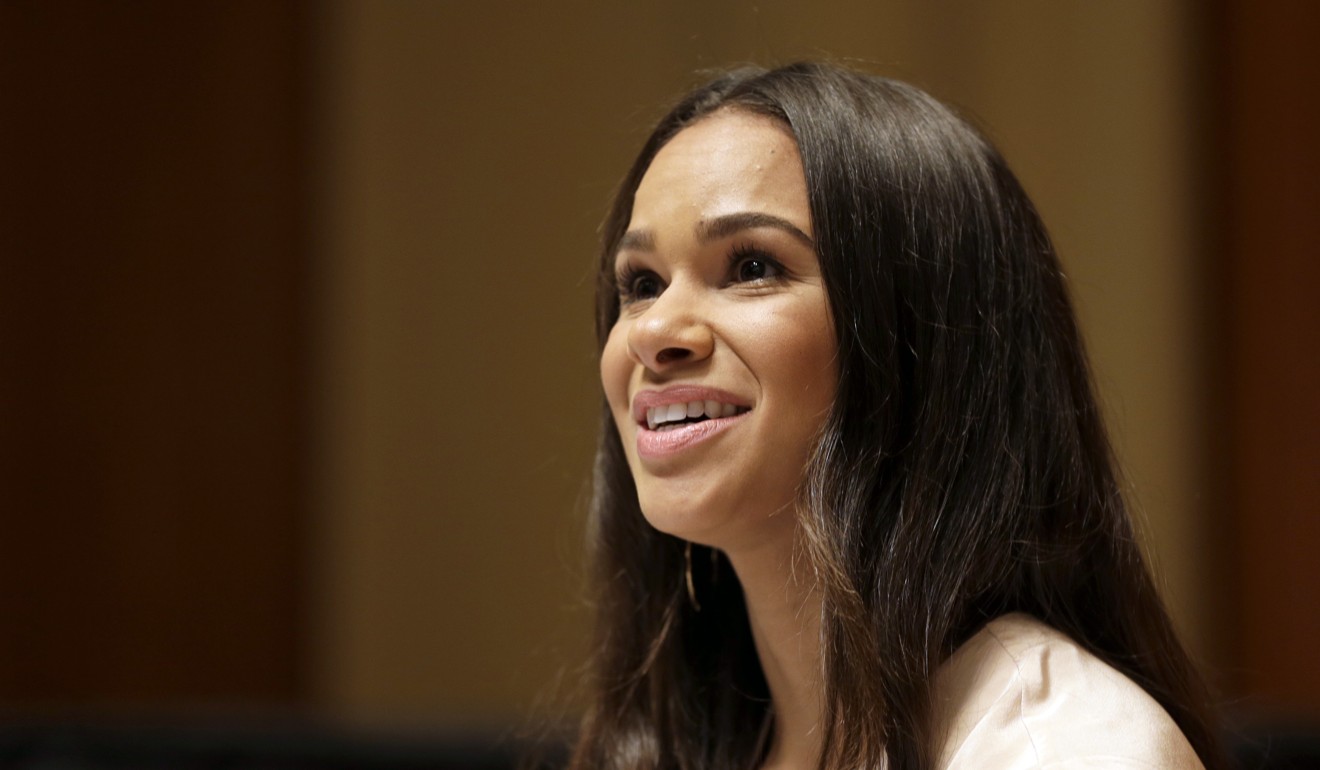
A unique journey indeed. Born in Kansas City, Missouri and raised in San Pedro, California, Copeland began her ballet studies late, at age 13. She had a tumultuous relationship with her mother, one filled with custody battles, broken relationships and law suits.
It was only when she left the family unit to focus on dancing under the guidance and guardianship of her ballet teacher Cynthia Bradley that things started to look up.
At 15 she placed first in the Music Centre Spotlight Awards then went on to study at the San Francisco Ballet School and American Ballet Theatre’s Summer Intensive on a full scholarship. The rest, as they say, is history. Or in her case, making history.
A week after Copeland gained principal dancer status she ticked another box, the first black woman to perform the lead role of “Odette/Odile” in American Ballet Theatre’s Swan Lake. But the success has not swayed her from her message, to encourage everyone – in particular young girls – to love their body.

“I was told I didn’t have the right body, had the wrong skin colour, was told to lose weight. The way I was raised, I definitely could have ended up with an eating disorder. But instead I was like, ‘how can I be my healthiest self and still be me?’
“It’s not just performers and those in the spotlight who struggle with body image issues. It’s everyone. … It’s beautiful to be unique and to be an individual … all those filters on social media that makes everyone look the same. Where’s the beauty in that?”
While admitting she is not savvy with social media – “I’m so behind” – Copeland is fully aware of its power.
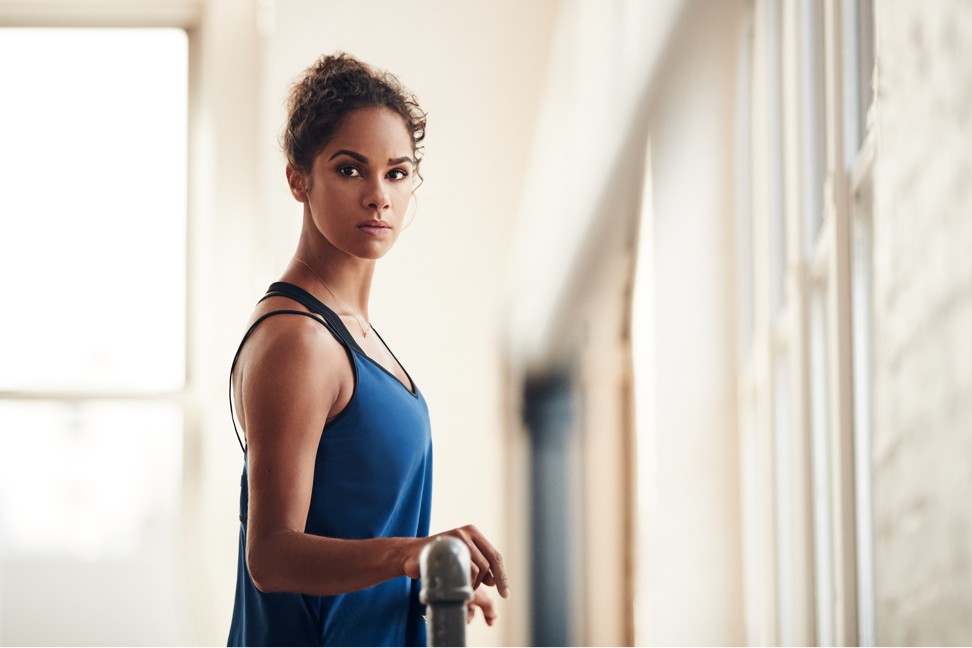
Instagram is her favourite platform. “It’s such as incredible way to share dance. It’s so visual and a great way to expose people to ballet who might never have been interested,” Copeland says.
She has less praise, however, for beleaguered Facebook. “I’m very careful about what I share on Facebook because I get a lot of negative feedback from people about race. A lot of people have issues with that for some reason.”
She is mad about fitness and in 2017 released Ballerina Body: Dancing and Eating Your Way to a Lighter, Stronger, and More Graceful You, a health and fitness book sharing advice from meal plans and workout routines to refine the body you were born with to be lean and flexible. She loves food.
“I would love to open a restaurant. I love to cook and it’s a lot of hard work, but I would love to do that. I’d probably be a chef in another life.”
But for now her feet are firmly cemented in the arts, where she has been pushing for greater diversity.
“It really starts by seeing yourself represented on the stage and I’ve seen such a huge shift since I’ve been with the company, seeing more African Americans, more brown people, coming [to the ballet] because they feel like this is something they can do.”
At 35 years old, Copeland says her career as a principal dancer should continue until she is about 40. What to do after ballet? “Whatever you can to keep going. Some set up schools and teach. I want to stay connected with ballet and give back and have an organisation and continue pushing the message of diversity.
“But everyone’s different. So many dancers go on to have different lives – lawyers, doctors.”
As she heads off to a photo shoot, Copeland says she is exited about seeing more of the city.
American Ballet Theatre’s Whipped Cream revives a forgotten score by Richard Strauss with mixed results
“My husband is in Hong Kong,” she says, referring to American lawyer Olu Evans, who she tied the knot with in 2016. “He is here with his mother and little brother, so we’re all going exploring.”

